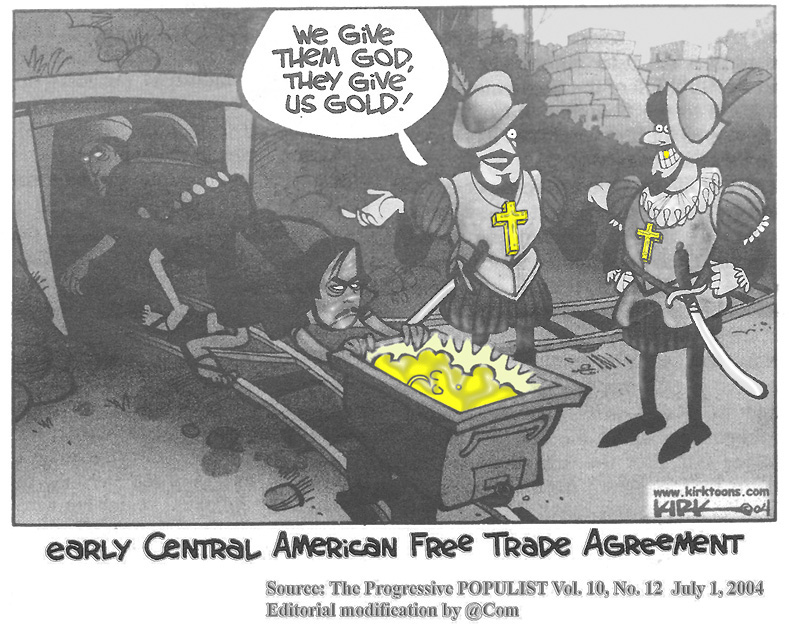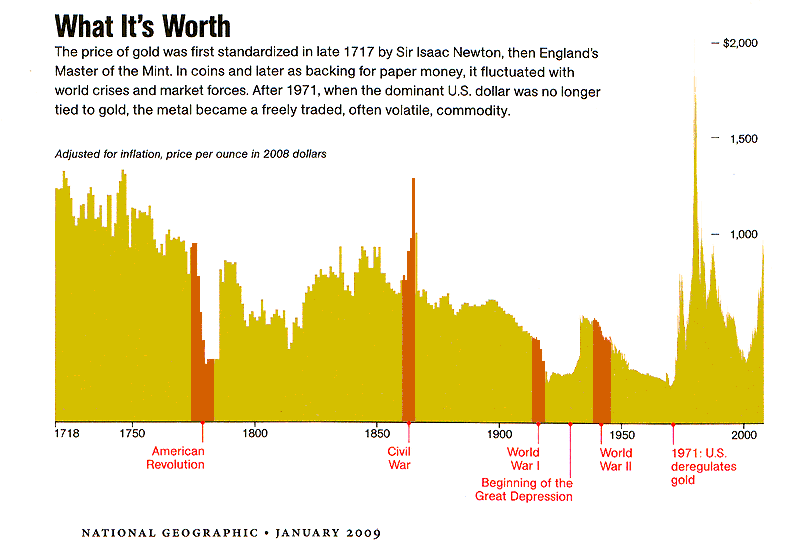|
Home
Next
Comments?
Pope
Interesting maps
Secret
Ceremonies
Nazis & Pope
Islam
SUMMUM
Atheists
|
Looting of Pre-Columbian treasure by Catholics continues to this day
U.S. judge recommends giving
treasure to Spain By J i m L o n e y – Thu Jun
4, 2009
 MIAMI (Reuters) – A U.S. judge said a shipwreck found by an American
treasure hunting company is the Spanish warship Mercedes and its loot
should be returned to Spain, but the firm said on Thursday it would
contest the non-binding decision. MIAMI (Reuters) – A U.S. judge said a shipwreck found by an American
treasure hunting company is the Spanish warship Mercedes and its loot
should be returned to Spain, but the firm said on Thursday it would
contest the non-binding decision.
The recommendations on Wednesday by a magistrate judge in Tampa,
Florida, marked the latest step in a lengthy battle between the treasure
hunters, Odyssey Marine Exploration Inc, and the governments of
Spain and Peru
over nearly 600,000 silver and gold coins valued at some
$500 million.
The Spanish government hailed the decision from Magistrate Mark Pizzo,
which called for the treasure to be
returned [sic]
to Spain
within 10 days. But it was simply a recommendation to a U.S. district
court judge, who will issue a final order.
"I am delighted that the judge has ruled that the ship belongs to Spain
and the treasure belongs to Spain. It is a very important decision,"
said Spanish Culture Minister Angeles Gonzalez-Sinde, adding it set an
important precedent.
Odyssey's shares closed nearly 43 percent lower at $2.21 on the Nasdaq
exchange on Thursday.
The company said the magistrate's recommendations would have no impact
on its balance sheet because the coins were never treated as assets.
Odyssey discovered wreckage and a 17-tonne haul of artifacts in March
2007 in international waters about 100 miles west of the Straits of
Gibraltar.
Spain said the coins came from the Nuestra Senora de las Mercedes, a
frigate carrying treasure back from
Peru when it was sunk by British gunboats off the
Spanish coast in 1804.
Spain claimed the loot as its own, but not before Odyssey had flown the
treasure to Florida from Gibraltar, a British territory.
CODE NAME 'BLACK SWAN'
The Mercedes sank in the first few minutes of the Battle of Cape St.
Mary's as an explosion ripped it apart, killing more than 200 sailors.
The attack led Spain to declare war on Britain and enter the Napoleonic
Wars on the side of France.
Pizzo said in his report there was solid evidence the wreckage was that
of the Mercedes, as Spain argued.
"The debris field's location, coins, cannons and artifacts persuasively
match the Mercedes historical record," he wrote.
He said the Tampa court did not have jurisdiction in the case and
recommended the artifacts be returned to Spain.
Peru, which was ruled by Spain at the time the Mercedes was sunk,
entered the legal fray in August when it filed a claim for information
with the Tampa court. The filing said
the coins may be "part
of the patrimony of the Republic of Peru."
Emphasis added.
Source: http://news.yahoo.com/s/nm/20090604/sc_nm/us_spain_treasure_odyssey_4
Peru, which was ruled by Spain at the time the Mercedes was sunk,
entered the legal fray in August when it filed a claim for information
with the Tampa court. The filing said
the coins
|
|
What happened to all the gold Spain got from
the New World?
October 4, 1985
Dear Cecil:
 |
Pulitzer
Prize Winner
Guns, Germs, and Steel:
The Fates of Human Societies
by Jared Diamond
Hardcover
|
For a good many years, Spain had a
virtual monopoly on the importation of gold from the New World. Although
some of it wound up on the ocean floor (witness recent discoveries near
Florida), we know that an awful lot actually made it to the mother country,
helping to make Spain one of the richest and most powerful nations in Europe
at the time. Today, of course, it is neither. My question is, what happened
to all that gold? I've considered some of the possibilities, but I'm not
convinced: (1) The ship captains stole it. (2) The kings of Spain made lousy
investments. (3) The Portuguese (or the French or the Italians or the North
Africans or somebody) stole it. (4) It was buried somewhere and the folks
who buried it forgot where. Since I assume the Spanish have not developed a
gold-fueled nuclear device, thereby converting matter into energy, I think
I've run out of possibilities. Que paso?
— Joseph M., Los Angeles
Cecil replies:
The average person reading this question would probably figure you've got
filings in the brain pan, Joe, but in fact you have asked a question that
baffled Spaniards at the time and has fascinated historians since. A couple
things to keep in mind: first, while the flood of gold into Spain in the
16th century seemed like a big haul at the time, by modern standards it was
a trivial amount. Total world gold production during the 1500s is estimated
to have been around 36 tons; from 1900 to 1976 it was 76,428 tons. (Which
still isn't all that much, incidentally. It's claimed that all the gold
that's ever been mined would fit into a cube 18 yards on a side.)
Second, you're right in guessing that a lot of the gold was stolen. One
researcher estimates that 10 to 15 percent of the New World gold intended
for Spain never got there due to theft, piracy, or other mishap.
Nonetheless, that leaves 85 to 90 percent that did make it, along with tons
of silver, which began to be mined in quantity toward the end of the 16th
century. Where did it go? The answer has to do with the slippery nature of
money. The importation of New World gold into Spain coincided with a
corrosive inflation that has come to be known as the "price revolution."
Although prices had dropped steadily during the 1400s, after 1500 they began
to rise dramatically — 300 percent by 1600, according to economist Earl
Hamilton, who wrote a well-known book on the phenomenon. The reasons for
this are complex, but it seems clear that at least in part it was a matter
of a sharply increasing amount of money (in the form of silver and gold)
chasing a relatively fixed output of goods and services, thus bidding up the
price. Among other things the higher prices meant Spanish goods became
uncompetitive on European markets. Even the Spanish themselves began buying
foreign products, resulting in a lot of cash leaving the country. In
addition, inflation stifled local investment, with the grandees spending
their dough on conspicuous consumables instead.
For the latter part of the 1500s and on into the 1600s Spain was a debtor
nation, spending more abroad than it took in. The result was a net outflow
of gold and silver. Attempts were made to restrict the export of precious
metals, but without much success. In the end it all simply dribbled away.
The problem was that the conquest of the New World left Spain with a lot
more money, but not that much more wealth, if you follow me. They didn't
realize that until too late, and suffered centuries of poverty as a
consequence.
Spanish gold today: Still dribbling?
Your article on what happened to Spain's gold left out some more recent
developments. During the Spanish Civil War the Republican side was supported
by socialist volunteers from many countries, including Russia. As the war
deepened it looked like the Republicans might lose. So the Russians came up
with a brilliant suggestion: why not send the Spanish treasury of gold,
silver, and precious stones to Papa Stalin where it would be safe? After
all, weren't the Russians laying down their lives for Spain? The Spaniards
bought it. Today the treasury of Spain is safe in the hands of the Russians.
I cannot prove this but I believe it.
— Ralph F., Washington, D.C.
Cecil replies:
There are lots of apocryphal stories like this floating around. In Treasures
of the World (1966), Robert Charroux claims the treasure of the Spanish
Republicans, or at least a treasure, is buried on a beach near the town of
Argeles, France. Says Charroux, "it is a big, indeed very big treasure,
originally intended for the maintenance of a Communist maquis force. Only
eight people knew of its existence and where it was deposited. Then came the
1939-45 war: several holders of the secret were killed and those who
returned were never able to find the hiding-place again." Though the
treasure supposedly lies only seven feet underground, the site is subject to
frequent flooding that has altered natural landmarks. Postwar construction
in the area has further confused matters. Charroux says "hundreds of
thousands of people, including the French minister Monsieur Jules Moch" have
sought the treasure, all in vain. I take that as a pretty good sign there's
nothing there, but you're welcome to go look for yourself.
— Cecil Adams
Source:
StraightDope.com |
 MIAMI (Reuters) – A U.S. judge said a shipwreck found by an American
treasure hunting company is the Spanish warship Mercedes and its loot
should be returned to Spain, but the firm said on Thursday it would
contest the non-binding decision.
MIAMI (Reuters) – A U.S. judge said a shipwreck found by an American
treasure hunting company is the Spanish warship Mercedes and its loot
should be returned to Spain, but the firm said on Thursday it would
contest the non-binding decision.
